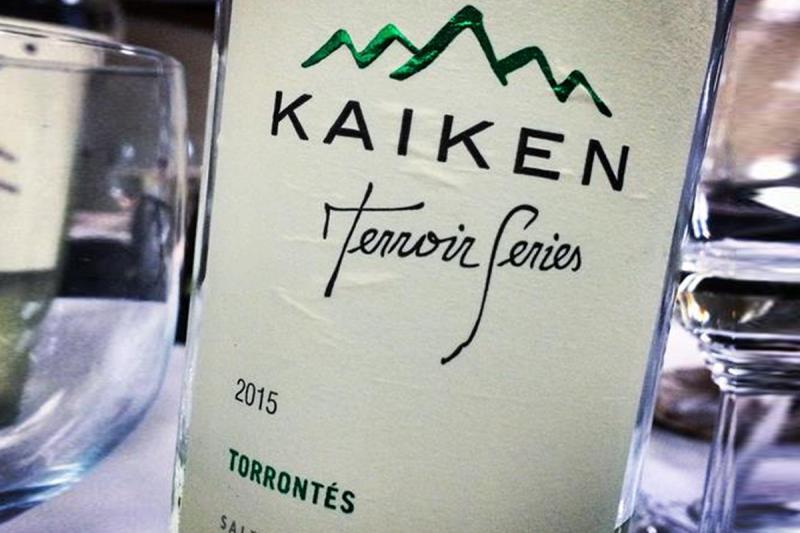This weekend was filled with preparation for a tasting in Philly, followed by another in Manhattan. I'm really excited about these opportunities. September and October tastings provide enough grist to this mill for much of the year. My primary problem becomes deciphering my cryptic notes. I've tried the recording method, but then I need to transcribe and that seems counterproductive. Let's begin the week with a read on Kaiken Terroir Series Torrontes 2015. These are produced by Montes in the Cafayate Valley, Salta, Argentina and are on the market around $13. Green-tinged, pale golden-colored, opens to Muscat, floral and tropical fruit nose supported by appropriate acidity. Initially the wine was too cold, masking the nose, and the grapefruit flavor shone through. However, warming to the proper temperature allowed the nose to expand and a more complex tropical fruit flavor to announce itself. A very long, clean finish makes it an excellent seafood wine. Very dry, 13.2 percent alcohol, 2 price points brings 89 McD rating.
For those unfamiliar with Torrontes, it is the ubiquitous white wine of Argentina but is also grown in Chile. RRs will possibly remember my article on Abacela winery in Oregon which has done an excellent job with this grape. These are thick-skinned with large berries and grow well in the high-altitude, very dry slopes of the Andes. They seem to thrive where there are wide temperature swings over 24-hour periods. Torrontes is prone to mildew, so this terroir is ideal. There are three varietal types of Torrontes: Sanjuanino, Mendocino and Riojano. Most agree the Riojano produces the higher quality. I am unsure because I tend to go with the better winemakers. A lifetime of sipping has taught me that great viticulture, a talented nose and palate will produce better wine than that from the best juice in inept hands.
Let's look at the Prosecco DOC NV from Ruffino. These make a delicious drink named a Belllini. Several critics slapped this Prosecco around. For some reason, once the price on sparklers drops below $12-13, the ratings rarely crack 86 points. This is one of the primary reasons I add in price points. I found the Ruffino NV Prosecco to be a fine value and an 88-point McD, 2 price points. These are made bulk process (Charmat process), and NV production uses blending so the wine has a similar profile year after year. Straw-colored with good bead, opens fruity with tart apple and pear notes. Do not confuse fruit with sweetness; the wine is extra dry. Apple and peach flavors are easily observed and continue through a clean finish. Ruffino claims you will find wisteria, hawthorn and elder in the bouquet. I'm sorry to say, my olfactory bulb limits my description to "some floral notes." Did you know that Prosecco comes in three styles: Spumanti (sparkling), frizzanti (semi-sparkling) and tranquillo (still)?
For those who remember the nostalgia of “Lady and the Tramp,” think about those bottles of Chianti wrapped in straw-like containers. I was a fan of that packaging and Chianti, until the powers in Italy discovered bottling Sangiovese, Rosso, the infamous Tuscan Blend and various other names would drive the price of AKA Chianti. Those basket-wrapped bottles, by the way, are named fiaschi and were the signature bottle used for Chianti dating to at least the 15th century and possibly further. Painting with a broad brush and ripping off a sentence from a Winesearcher article, "The fashion has declined in the 21st century, however, as winemakers have sought to shed the association of Italian wine with the cheap-and-cheerful image of days gone by. It is now overwhelmingly more common to find Chianti wines in tall Bordeaux-style bottles." Sorry, paisani, but I still find the romance in the small Italian joints with the red- or green-and-white checked tablecloth, real, crusty bread with firm-textured white innards, parm or romano chunks you grate yourself and no xvoo puddle.



















































